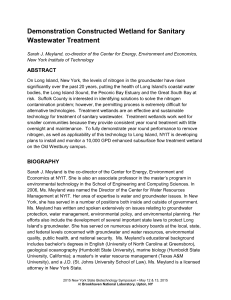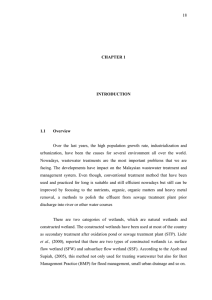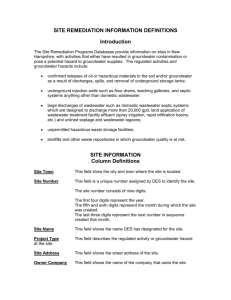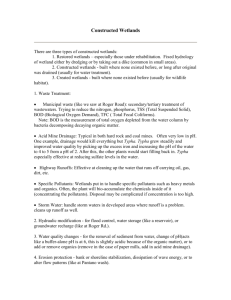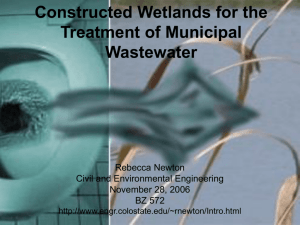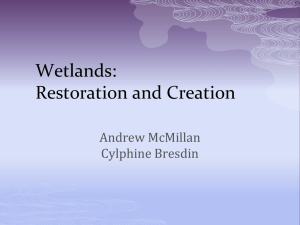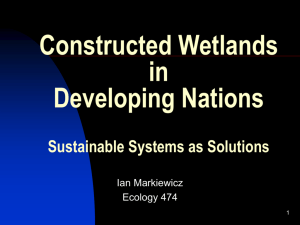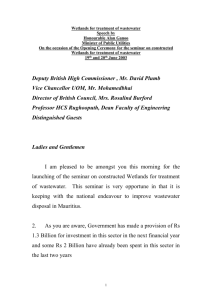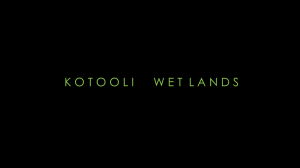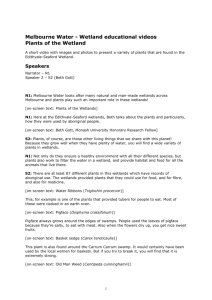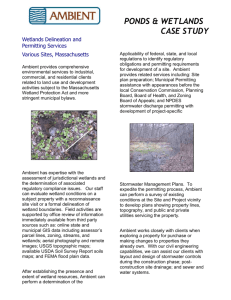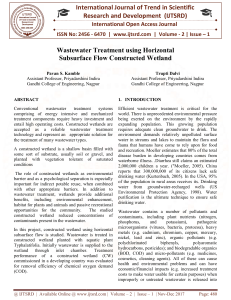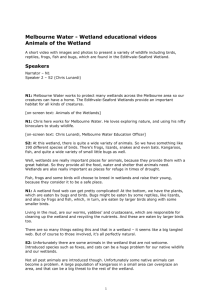Biotechnological Water Sanitation for constructed wetlands through
advertisement
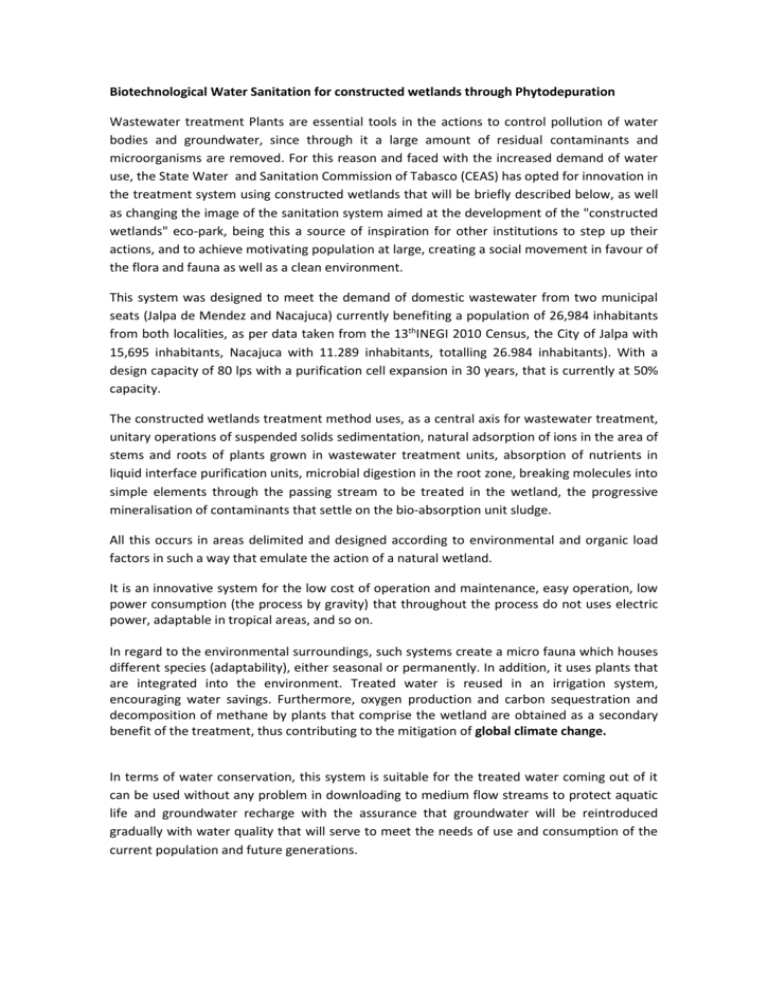
Biotechnological Water Sanitation for constructed wetlands through Phytodepuration Wastewater treatment Plants are essential tools in the actions to control pollution of water bodies and groundwater, since through it a large amount of residual contaminants and microorganisms are removed. For this reason and faced with the increased demand of water use, the State Water and Sanitation Commission of Tabasco (CEAS) has opted for innovation in the treatment system using constructed wetlands that will be briefly described below, as well as changing the image of the sanitation system aimed at the development of the "constructed wetlands" eco-park, being this a source of inspiration for other institutions to step up their actions, and to achieve motivating population at large, creating a social movement in favour of the flora and fauna as well as a clean environment. This system was designed to meet the demand of domestic wastewater from two municipal seats (Jalpa de Mendez and Nacajuca) currently benefiting a population of 26,984 inhabitants from both localities, as per data taken from the 13thINEGI 2010 Census, the City of Jalpa with 15,695 inhabitants, Nacajuca with 11.289 inhabitants, totalling 26.984 inhabitants). With a design capacity of 80 lps with a purification cell expansion in 30 years, that is currently at 50% capacity. The constructed wetlands treatment method uses, as a central axis for wastewater treatment, unitary operations of suspended solids sedimentation, natural adsorption of ions in the area of stems and roots of plants grown in wastewater treatment units, absorption of nutrients in liquid interface purification units, microbial digestion in the root zone, breaking molecules into simple elements through the passing stream to be treated in the wetland, the progressive mineralisation of contaminants that settle on the bio-absorption unit sludge. All this occurs in areas delimited and designed according to environmental and organic load factors in such a way that emulate the action of a natural wetland. It is an innovative system for the low cost of operation and maintenance, easy operation, low power consumption (the process by gravity) that throughout the process do not uses electric power, adaptable in tropical areas, and so on. In regard to the environmental surroundings, such systems create a micro fauna which houses different species (adaptability), either seasonal or permanently. In addition, it uses plants that are integrated into the environment. Treated water is reused in an irrigation system, encouraging water savings. Furthermore, oxygen production and carbon sequestration and decomposition of methane by plants that comprise the wetland are obtained as a secondary benefit of the treatment, thus contributing to the mitigation of global climate change. In terms of water conservation, this system is suitable for the treated water coming out of it can be used without any problem in downloading to medium flow streams to protect aquatic life and groundwater recharge with the assurance that groundwater will be reintroduced gradually with water quality that will serve to meet the needs of use and consumption of the current population and future generations.

